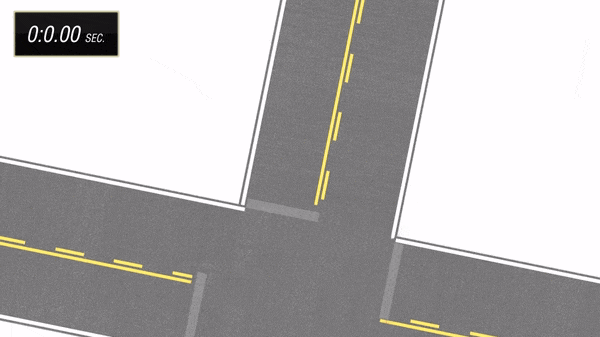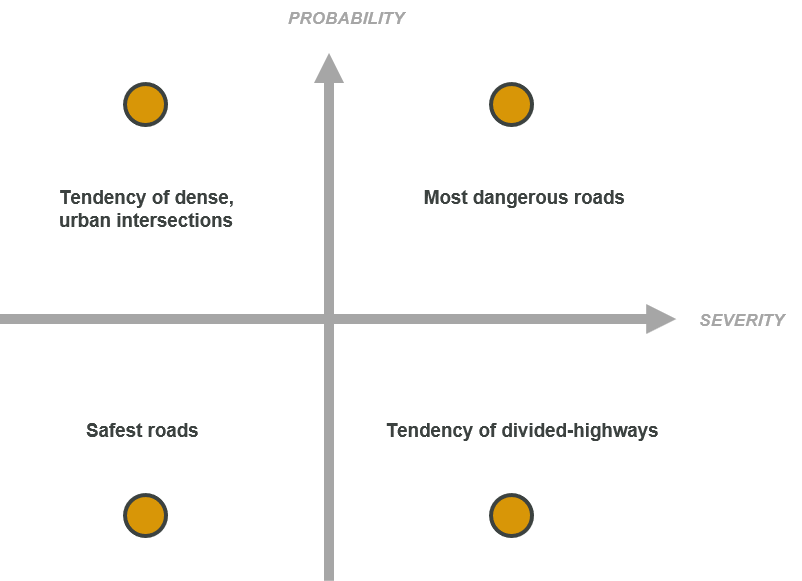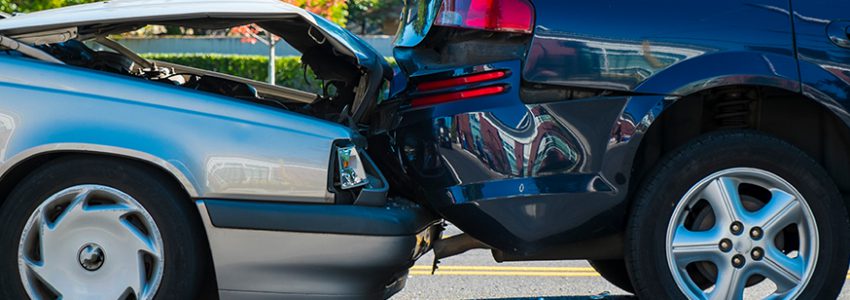Author: Julie Levy, B.Eng. | Project Delivery Manager, Transoft Solutions
Most road safety studies are concerned with two aspects of road safety:
1. Collision Probability, that is, how likely are road users going to strike each other?

2. Collision Severity, that is, if a collision were to occur, how severe would it be? This can range from simple fender benders, with only cosmetic property damage, all the way up to fatalities.

These two aspects of road safety involve fundamentally different factors and processes. The chances of a collision depend greatly on the spatial interrelation of road users and their ability to navigate around each other. We understand that driving involves at least four major tasks, including: sensing, estimating danger, navigational decision making, and executing evasive action. Inhibiting factors could present themselves at each of these tasks, including distraction, visual obstruction, impairment, inexperience, mechanical failure, etc.
Transoft Solutions uses Post-Encroachment Time (PET) and Time-to-Collision (TTC) as collision proximity measures. Both are effective for measuring the likelihood of collision, or, how close in time two road users were to colliding. In addition to collision likelihood, it is also important to look at collision potential severity, in order to address the question “how severe would this interaction be if it were to have resulted in a collision?” Once it is clear how conflicts compare in terms of likelihood of collision and severity, it becomes possible to compare them to one another more comprehensively. For example, conflicts with lower PET/TTC values might have a higher likelihood of collision but could have low collision severity. Conflicts with high PET/TTC values are of low likelihood of collision but could have a greater collision severity.

These two aspects of road safety exist and can be measured independently from each other. The safest roads address both problems, while the least safe roads address neither. Some types of roads tend to be focused in one aspect of road safety or another out of necessity. For example, divided highways accommodate high speeds (associated with high collision severity outcomes) and so the focus is to implement measures to reduce collisions altogether (divided median, no at grade crossing, etc.). Conversely, it is difficult to separate streams of flow in dense urban environments, so a great deal of emphasis is placed on reducing speeds.
Collision severity outcome is an energy transfer process that depends on kinetic energy factors of speed and mass as well as the complex processes of how this energy is absorbed into the human body. Transoft looks at three main factors that could affect the severity of a collision:
- Speed: Perhaps the most obvious one is road user speeds at the time of collision. Numerous studies have shown that higher vehicle speeds at the time of collision are more likely to result in severe injury or death.
- Mass: The mass of the two road users involved in the conflict also affects the severity. For instance, a collision between two road users with a significant difference in mass such as a truck versus a car, or a car versus a pedestrian, is going to be more severe than a conflict between two cars, given all other factors stay the same.
- Angle: The angle of the conflict might also affect the severity of the collision. For instance, through-through vehicle collisions would be more severe to the drivers than rear-end collisions. This is because vehicle crash performance is different at different locations. For instance, passenger cars have crumple zones, which are designed to absorb impact, concentrated primarily in the front and rear of the vehicle.
It is important to compare the various metrics that can affect collision severity when comparing conflicts at a site or across a network. Looking at the likelihood of collision side-by-side with severity can help practitioners develop more comprehensive and richer data analytics. Surrogate safety analysis can be used in all cases, whether the concern is more in one aspect of safety, or the other, or both simultaneously.